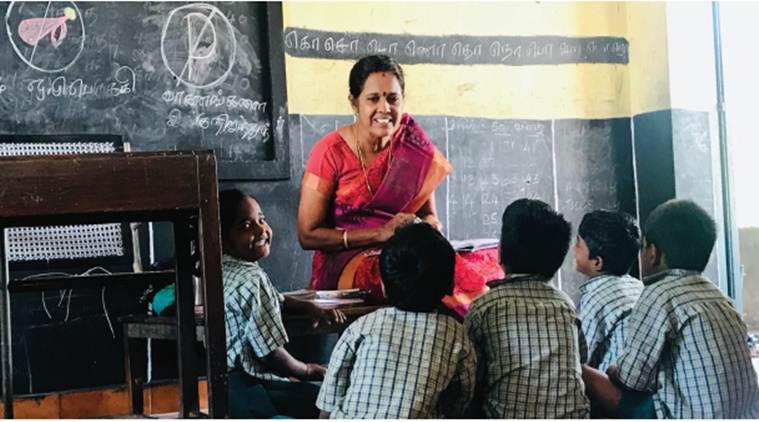 NEP 2020 has many positives, including not making Hindi compulsory in South Indian states. But on the pedagogically relevant and politically sensitive issue of the medium of instruction, the policy seems to follow the well-trodden path. (File)
NEP 2020 has many positives, including not making Hindi compulsory in South Indian states. But on the pedagogically relevant and politically sensitive issue of the medium of instruction, the policy seems to follow the well-trodden path. (File)
The medium of instruction has been a way of perpetuating class and caste structures in India. Accepting this reality will help us make sense of the language policy since Independence as well as the New Education Policy 2020 (NEP, 2020). NEP 2020 has many positives, including not making Hindi compulsory in South Indian states. But on the pedagogically relevant and politically sensitive issue of the medium of instruction, the policy seems to follow the well-trodden path.
It says that the mother-tongue or the regional language would be the “preferred” mode of instruction till Class 5, possibly Class 8. It also states that, “wherever possible” these languages will be used in public and private schools. Given the ground realities what does all this entail?
Before Independence, and possibly 20-25 years after Independence, most school-going children attended bhasha-medium schools, even if their parents belonged to the well-off sections of society. Only the elite sent their children to expensive English-medium schools. If one makes a list of retired top civil servants, academicians and officials of private and public sector enterprises above the age of 60, it’s very likely that most of them studied in a bhasha school. Studying in a bhasha school did not hamper their progress in life. There are two reasons for this. First, these schools were excellent in those times. Even the standard of English taught in those schools was very good. So, students coped easily in colleges and universities. Second, most students belonged to the upper castes and had a tradition of education in their families.
Over the years, while school enrollment has increased, the quality of education in bhasha schools — invariably government schools — has deteriorated. At the same time, most students from the well-off sections have opted out of them. This shift from bhasha schools to English-medium schools first happened in the metros, then in middle-level cities and has reached the villages now. The bhasha schools have begun drawing children from the Bahujan Samaj. These children suffer from two handicaps. First, the extremely poor quality of education in most bhasha schools — with exceptions in states such as Kerala and Tamil Nadu. Second, such children rarely have a tradition of education in their families and find it very difficult to compete with their peers who have a much better financial background, better education and proficiency in English. But the benefit of expanding education is that such children, who would not ask for a better deal earlier, are now making their demands clear. One remembers the agitation in 2014 when the Hindi-speaking students were arguing that the higher education system is loaded against the bhasha medium students, especially at the UPSC level.
There is a conflict between what the educationists say — one understands the subject best in the mother-tongue, we as a nation should not lose such a multitude of languages, studying in the English-medium leads to gaps in the understanding of one’s own society — and what the parents think is necessary for the economic survival of their children. So, parents send their kids to English-medium schools as soon as they can afford it. The bhasha medium students do not get the coveted jobs and the disparity between the two widens.
NEP 2020 does not tackle the issue of inequity that arises out of the medium of instruction. The document pays lip-service to the promotion of bhashas, but the policy will end up reinforcing the status quo. The English-medium schools will continue as they are, rather more of them will sprout. But the agitation of 2014 could be a harbinger of the possible political unacceptability of this “manner of doing things”.
One could let all students study English from an earlier age. Admittedly, this goes against the basic principles of education, and the non-elite will face more problems in studying English. But an exposure to basic English from a very young age in bhasha schools — through rhymes, simple sentences — could make learning the language later much easier. Making special funds available for English-teaching at panchayat or zila parishad level schools could also help. These could be some steps in making school education somewhat more egalitarian.
The writer is an Emeritus Professor of Economics, Savitribai Phule Pune University